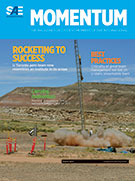Journal Article
The Missing Link: Aircraft Cybersecurity at the Operational Level
2020-07-25
Abstract Aircraft cybersecurity efforts have tended to focus at the strategic or tactical levels without a clear connection between the two. ...CSSEP’s process model postulates that security is best achieved by a balance of cybersecurity, cyber resiliency, defensibility, and recoverability and that control is best established by developing security constraints versus attempting to find every vulnerability. ...CSSEP identifies the major functions needed to do effective aircraft cybersecurity and provides a flexible framework as the “missing link” to connect the strategic and tactical levels of aircraft cybersecurity.








